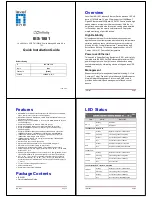
Chapter 28 Auto PD Recovery
GS1350 Series User’s Guide
233
Figure 170
Auto PD Recovery (LLDP Mode)
2
Select the desired ports in the
Active
column.
3
Select the
Mode
.
When you select
Ping
, the connected PD’s IPv4 or IPv6 address to which the Switch sends ping requests
will display automatically if the PD supports LLDP. If not, enter the IP address of the PDs in the
Neighbor
field.
The default setting for
Polling Interval
(20 secs) and
Polling Count
(3 times) will cause the Switch to ping
the PD status every 20 seconds. If there is no ping reply from the PD,
Polling Count
starts to count from 1.
Once
Polling Count
reaches 3, the Switch will cause a
Reboot-Alarm
on the PD as selected in
Action
.
When you select
LLDP
, the Switch monitors the PD status by checking incoming LLDP packets every 30
seconds from the PD (default value of transmit interval for LLDP feature).
Likewise, the Switch sends out LLDP packets to the PD every 30 seconds to update the
Status
>
Neighbor
for details).
Once the LLDP table’s counter reaches the default 120 seconds, the Switch will cause a
Reboot-Alarm
on the PD as selected in
Action
.
4
After sending an SNMP trap and generating a log message, the connected PD will restart (the
connecting port is detected as link-down).
When restarting, the PD entry disappears from the Switch’s LLDP table and the
PD Health
status LED will
turn to yellow in the
Status
>
Neighbor
screen.
The Switch will restore power to the PD based on your value for
Resume Power Interval
.
After the PD is powered on, the Switch resumes detection of the PD status by performing ping requests
or checking the LLDP table based on your value for
Resume Polling Interval
.
When the
PD Reboot Count
value is reached, the Switch will no longer perform the PD recovery process.
The
PD Health
status LED will turn to red in the
Status
>
Neighbor
screen.
















































